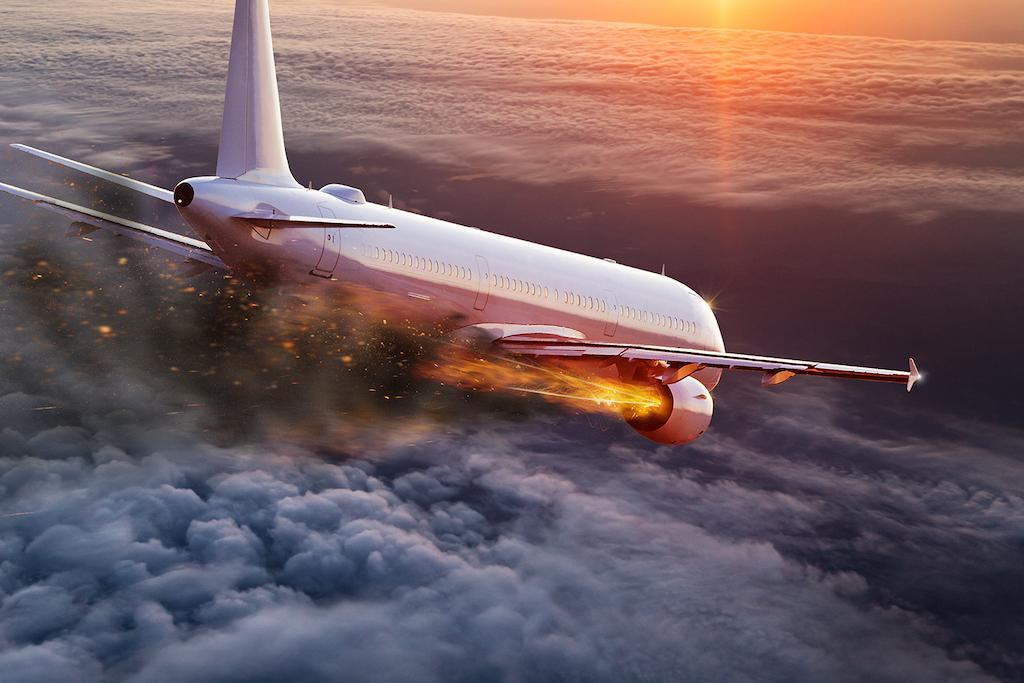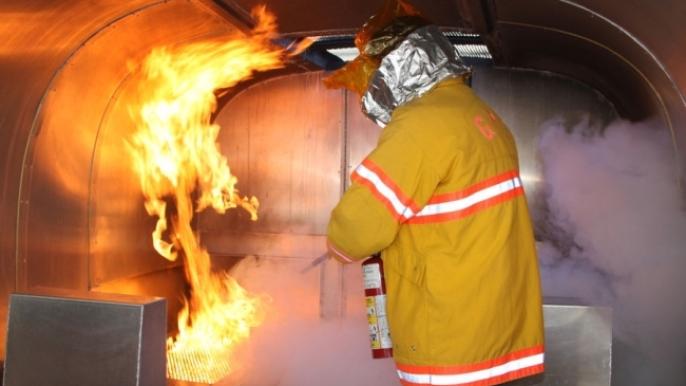
Depiction of an aircraft engine fire.
This is the first in a two-part series on diversion decisions.
“There I was, at 30 West with one engine on fire, the other engine about to quit, and a load of passengers wondering why the cabin lights had gone dim. The number of questions was adding up, but the number of answers remained steady at nil. The only thing certain was the altimeter, which was unwinding itself quickly as we held on to whatever airspeed we still had.”
So goes a recurring nightmare of mine, either a product of all the simulator time in my logbook or the few times where one element of the dream happened in real life. In any other profession, these kinds of dreams could be part of a neurosis, a mental condition caused by anxiety and stress. But since I am a pilot, I consider these dreams to be nothing more than “chair flying,” mentally preparing myself for what I hope never happens.
While instructing pilots about abnormal procedures when flying in remote or oceanic areas, I find it helpful to do the “there I was . . .” routine. While it would be impossible to cover every possible scenario, two that I’ve seen over the years may serve to illustrate a few helpful concepts. So . . .
Cabin Smoke

“. . . there I was, the cabin filling with smoke and nothing but open ocean in front of me.”
It was almost a routine flight, from Anchorage, Alaska to Honolulu, Hawaii. We were flying an Air Force Boeing 707, what we called an EC-135J, with about 20 Navy passengers and an Air Force crew of 10, including three mechanics. It was a fun week in Alaska, but now everyone looked forward to getting back to Hawaii. We had been airborne for about 30 min., and I was getting ready for my oceanic duties as the crew’s copilot. Something was nagging me. Oddly, the air felt and tasted oily. I immediately suspected the engines, but the gauges looked perfectly normal. I was about to say something when the navigator beat me to the punch: “Fire!” I turned in my seat and saw the cabin filled with dense, acrid smoke. Everything within a few feet of the ceiling was “WOXOF” (ceiling indefinite, visibility zero) but below that it was clear. Now what?
“I’ll turn us back to Anchorage,” the pilot said, “you get back there and figure it out.” I unstrapped, not having a clue what I could do. My first thought was the galley, which was right behind the cockpit, but the steward was seated, and his ovens were off. He shrugged his shoulders, as if this was just another day at the office. I could see the smoke spewing from an overhead duct. I doubled back and turned off the engine bleeds. The smoke stopped almost immediately but I knew our old airplane’s cabin leak rate meant our ears would soon be popping. One of the mechanics came forward and said the smoke was almost completely gone but so was our pressurization.
We had to dump over 100,000 lbs. of fuel, but 30 min. later we were on the ground. Later that night at the bar, the second guessing began. “The pax are unhappy,” our steward reported. “One of the mechanics complained to them that we didn’t need to turn back as quickly as we had, we should have isolated the bad engine by turning the bleeds on one-by-one. Then we could have made it home on the other three.” The pilot’s face reddened. “Better safe than sorry,” I offered. He brooded for the rest of the night, thinking word of our divert would filter to the squadron as us prematurely aborting the mission.
The next morning, we met for breakfast and the pilot greeted us with a hearty smile. “Well, we done good after all,” he said. The base’s maintenance shop found that an oily rag had somehow been ingested by the air cycle machine and the fire was contained to our air conditioning pack and was only extinguished once all the bleeds had been cut off. We only had one air conditioning pack and once that was shut off, all other options were out of the question. The divert, it turned out, was our only option.
Sometimes the only option you have is to head for the nearest runway and land.
These “no other option” decisions turn out to be the easiest to make but sometimes the hardest to execute. I think a fire of any kind, the loss of an engine on a two-engine aircraft, or a flight control problem that leaves you with any doubts about the aircraft’s airworthiness are examples of when the right answer is to quickly turn your air vehicle into a ground vehicle so someone else can sort it out.



